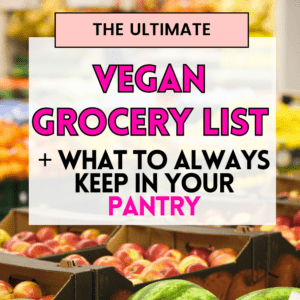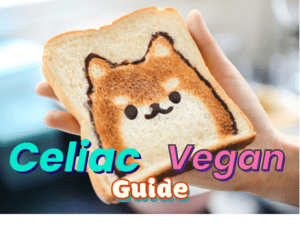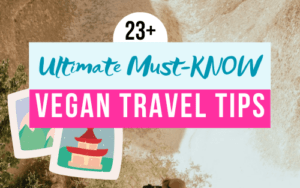Navigating the Vegan Transition
If you’re reading this then congratulations on considering transitioning to a vegan way of life! It’s awesome to make such a choice that resonates with your beliefs and the environment all while benefiting your health. At this point, I wouldn’t put too much pressure on yourself. Your transition can be done gradually and smoothly allowing you to still enjoy your foods while adopting a sustainable lifestyle.
What is Going Vegan Cold Turkey?
I won’t lie when I first heard of vegan cold turkey I thought it had something to do with vegan turkey brands? Going turkey is an English expression that means to immediately stop or eliminate a habit or behavior without any gradual transition. So in this case, it means transitioning to a vegan diet immediately and completely eliminating all animal products from your diet without a transition period.

Pros and Cons of Going Vegan Cold Turkey
Pros/ Benefits of Going Vegan Cold Turkey:
- Immediate commitment to ethical and environmental values.
- A rapid transition can lead to quick health improvements.
- Eliminates temptation to revert to old eating habits.
- Simplifies meal planning by eliminating animal products entirely.
Cons/ Side Effects of Going Vegan Cold Turkey:
- Potential for nutrient deficiencies if not properly planned.
- Increased risk of experiencing cravings, fatigue, and digestive issues.
- Sudden dietary changes may be difficult for some people to sustain in the long-term.
- Limited variety in food choices initially, which could lead to dissatisfaction.
When it comes to going vegan, there isn’t a one-size-fits-all answer. Some people find success in making the switch overnight, while others prefer a more gradual transition. Ultimately, the decision to go vegan cold turkey or transition gradually depends on your personal circumstances and preferences. It’s important to listen to your body and do what feels right for you.
You know yourself better than anyone else. How committed are you? Is this a one off-thing or do you plan on making it a long-term lifestyle. Also think about why do you want to go vegan? Health reasons? For the environment? For the animals? Your response should tell you how committed you are.

If your answer is more about the environment, lifestyle and animals then it generally means you feel strongly about being vegan beyond the diet. If this is something you feel strongly about then going cold turkey could be a solution for you (as long as you’ve researched it). Whereas if you want to try it out for Veganuary or start off slow to see how your body responds then going gradually is probably what you want to do.
Here are some tips to help you make the transition as smooth as possible:
Veganizing Your Plate:
#1 Replace cow’s milk with plant-based alternatives like soy, oat, or pea milk. Experiment with different non-dairy milks until you find the one you like the taste of the best. Also consider what brand is in your budget. I typically buy the supermarket branded one due to price point.
#2 Explore a variety of plant-based protein sources, including tofu, tempeh, seitan, lentils, beans, and legumes.
#3 Experiment with plant-meat substitutes for a familiar taste and texture.
#4 Try different vegan cheeses to find the alternatives you like the best. There are so many different vegan cheeses like feta, slices, even vegan blue cheese.
#5 If you don’t want like vegan cheeses you can use avocado, vegan mayo, or tahini as comparable calorie and fat sources as a substitute for traditional cheese.
General Vegan Advice:
#6 Understand that adjusting to what is or isn’t vegan takes time.
#7 Mistakes are part of the learning process. Don’t be disheartened. Remember it’s a journey.
#8 Acknowledge that you’ll probably a sense of isolation in a non-vegan world. And that’s normal.
#9 Connect with a vegan community online or in person to find a sense of belonging.
Veganism Isn’t About Perfection:
#10 Remember you are striving to eliminate animal products to a reasonable extent (especially at the beginning), considering your circumstances.
#11 Be patient. Your taste buds will adapt to the new flavors of a vegan diet within a few weeks.
#12 Drink tons of water to counteract potential digestive issues from increased fiber intake.
Do Your Research:
#13 Make sure to research to understand your values and understand and the impact of your choices.
#14 Knowing what you’re fighting for makes the transition easier.
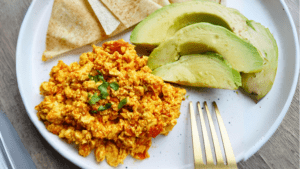
Eating Out with Ease:
#15 Eat before going out to events to avoid starving if vegan options are limited.
#16 Check restaurant menus beforehand and ask about vegan customization options. Most of the time they can try to make something vegan.
Build a Vegan Pantry:
#17 Stock your pantry with staples like lentils, grains (rice, oats, pasta, quinoa, barley, grits), beans, tofu, tempeh, seitan, nuts, and nut butters.
Grab that PROTEIN:
#18 Integrate beans, tempeh, tofu, lentils, and seitan into your weekly meal plans.
#19 You can use red lentils for versatile dishes like pasta sauces, curries, or soups.
Explore Those Recipes
#20 Commit to trying new vegan recipes regularly and save the ones you enjoy. I like to print them out so I can write little notes on what I added.
#21 Don’t hesitate to change up recipes to suit your taste preferences. There are no rules.
Grocery Shopping Tips:
#22 Familiarize yourself with the vegan options at local grocery stores.
#23 Read ingredient lists carefully, choosing non-dairy alternatives and vegan-friendly products.
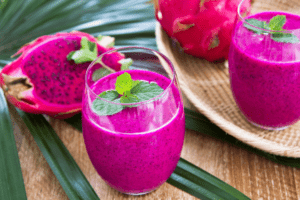
Nutritional Considerations & Supplements:
#24 Invest in vegan multivitamins to ensure you’re meeting your nutritional needs.
#25 Consider supplements for essential nutrients like B12, Omega-3, and Vitamin D.
#26 Pay attention to salt intake and consider electrolyte supplementation if needed.
#27 It will take time. Be patient as your taste buds adjust to the new flavors and textures of a vegan diet.
Navigating an Intolerance or Allergy
#28 Be mindful of common allergens such as nuts, soy, and gluten when exploring vegan alternatives.
#29 If you have an intolerance like celiac disease look for gluten-free options and make sure that the processed foods you eat are certified gluten-free.
Going Vegan Beyond the Food:
#30 You can expand your vegan commitment beyond diet to include cruelty-free cosmetics, toiletries, and clothing once you feel comfortable doing that. And have found products that work well like your previous ones.
#31 Join online or local vegan communities to connect with like-minded individuals.
Travelling as a Vegan
#32 Find a vegan hotel to really enjoy your stay and not worry about what you will eat.
#33 Use mobile apps or websites like Happy Cow to locate vegan restaurants at your destination
Be Flexible and PATIENT with Yourself:
#34 Remember perfection isn’t the goal. Progress is. Veganism is a journey, not a destination. Just do the best you can, and don’t compare your Chapter 1 to someone’s Chapter 17.
Going vegan from your previous diet is a process that requires patience and curiosity and a bit of dedication. But it’s totally do-able. By introducing plant based substitutes into your meals and trying out recipes you’ll discover that the transition is not only doable but also fulfilling. Keep in mind that you don’t need to be alone in this journey. There’s always a community of vegans to offer support and motivation out there.

